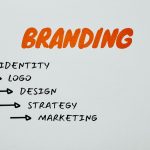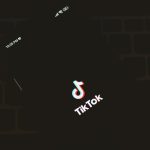When it comes to personal branding, your content strategy plays an essential role in how you present yourself online. You need to understand your audience and what resonates with them. By sharing the right mix of insights, experiences, and value-driven content, you can effectively showcase your unique perspective. But what specific types of content should you focus on to truly engage your audience and make an impact?
Table of Contents
Key Takeaways
- Share personal experiences and stories to connect authentically with your audience and showcase your personality.
- Provide industry insights and trends to position yourself as a knowledgeable resource in your field.
- Offer practical tips and how-tos that deliver real value and help solve your audience’s pain points.
- Highlight challenges you’ve overcome and lessons learned to inspire and motivate your audience.
- Engage with your audience by sharing common mistakes and resource recommendations to foster growth and learning.
Understanding Personal Branding
When you think about personal branding, it’s not just about promoting yourself; it’s about crafting an authentic image that resonates with your audience. Your brand reflects your values, skills, and passions, making it essential to be genuine.
Start by identifying what makes you unique—your strengths, experiences, and the qualities that set you apart. This clarity will guide your messaging and visuals, ensuring consistency across platforms.
Remember, personal branding isn’t a one-time effort; it’s an ongoing process that evolves with you. Engage with your audience by sharing insights, experiences, and stories that showcase your personality.
Defining Your Target Audience
Who are you trying to reach with your personal brand? Defining your target audience is essential for effective communication and engagement.
Start by identifying the demographics, interests, and pain points of the people you want to connect with. Consider factors like age, profession, location, and lifestyle.
Identify your audience’s demographics, interests, and pain points to connect meaningfully.
Next, think about where they spend their time online—social media platforms, blogs, or forums. This helps you tailor your content to resonate with them.
Create buyer personas to visualize your audience and understand their needs. By honing in on your target audience, you can craft content that speaks directly to them, making your personal brand more relatable and impactful.
Crafting Your Unique Value Proposition
A strong unique value proposition (UVP) sets you apart in a crowded market, making it clear why someone should choose you over others.
To craft your UVP, focus on these key elements:
- Identify your strengths: What skills or experiences do you possess that others don’t?
- Understand your audience: Know their needs and pain points to tailor your message effectively.
- Highlight your uniqueness: What makes your approach different? Consider your style, perspective, or methodology.
- Communicate benefits: Clearly express how your offerings solve problems or add value to your audience’s lives.
Choosing the Right Platforms
How do you decide which platforms best showcase your personal brand? Start by evaluating where your target audience spends their time. Each platform has its unique features and demographics, so aligning them with your brand’s message is essential.
Here’s a quick reference to help you choose:
| Platform | Best For |
|---|---|
| Professional networking | |
| Visual storytelling | |
| Real-time updates & engagement | |
| Community building |
Think about your strengths, too. If you’re great at photography, Instagram might be your sweet spot. If you excel in writing, consider blogging or LinkedIn. Choose wisely, and make your presence count!
Types of Content to Share
When it comes to personal branding, the type of content you share makes a big difference.
You can connect with your audience through personal experiences and stories, while also providing valuable industry insights and practical tips.
Let’s explore how each type of content can enhance your brand and engage your followers.
Personal Experiences and Stories
While sharing personal experiences and stories may seem challenging, it’s one of the most powerful ways to connect with your audience.
Authenticity resonates, and your unique journey can inspire others.
Here are four types of personal stories you can share:
- Challenges Overcome: Talk about obstacles you’ve faced and how you conquered them.
- Lessons Learned: Share valuable insights gained from your experiences.
- Milestones Achieved: Highlight key moments in your life or career that shaped who you are.
- Passions and Interests: Discuss hobbies or interests that reflect your personality and values.
Industry Insights and Trends
What’s happening in your industry right now? Staying updated on the latest trends and insights is essential for your personal brand.
Share articles, reports, or infographics that highlight emerging technologies, market shifts, or consumer behavior changes. Engage your audience with your thoughts on these developments, explaining how they impact your field.
You can also comment on recent industry events or conferences, sharing key takeaways that resonate with your experiences. By discussing these insights, you position yourself as a knowledgeable resource, attracting followers who value your expertise.
Don’t forget to join conversations on social media platforms, amplifying your voice and connecting with like-minded professionals. This approach not only adds value but also strengthens your personal brand’s credibility.
Tips and How-Tos
To effectively engage your audience, sharing practical tips and how-tos is a powerful strategy. This type of content not only showcases your expertise but also provides real value to your followers.
Here are four types of tips and how-tos you should consider sharing:
- Step-by-step guides: Break down processes into easy-to-follow steps.
- Quick tips: Offer bite-sized advice that can be implemented immediately.
- Common mistakes: Highlight pitfalls to avoid, helping your audience navigate challenges.
- Resource recommendations: Share tools, books, or websites that enhance your audience’s learning and growth.
Balancing Professional and Personal Stories
How do you strike the right balance between sharing your professional achievements and your personal experiences? It’s essential to create a narrative that reflects both sides of you. Professional stories showcase your skills and expertise, while personal anecdotes humanize your brand.
Here’s a table to help you think about what to share:
| Professional Stories | Personal Stories |
|---|---|
| Career milestones | Hobbies and interests |
| Industry insights | Travel experiences |
| Networking successes | Life lessons |
| Skills development | Volunteer work |
| Achievements in projects | Family moments |
Engaging With Your Audience
While you share your professional and personal stories, engaging with your audience is essential for building a strong personal brand. Authentic interaction fosters trust and connection.
Engaging authentically with your audience is key to fostering trust and building a strong personal brand.
Here are four effective ways to engage:
- Ask Questions: Encourage discussions by asking open-ended questions related to your content.
- Respond Promptly: Show appreciation for comments and messages by responding quickly. This illustrates you value their input.
- Share User-Generated Content: Highlight your audience’s contributions or feedback. It shows you care about their experiences.
- Host Live Sessions: Go live on social media to answer questions in real-time. This makes your audience feel involved and valued.
Consistency in Messaging
Consistency in messaging is essential for establishing a recognizable personal brand, as it helps reinforce your identity and values across various platforms. When you maintain a steady tone and style, your audience knows what to expect, which builds trust. Here’s a quick overview of how consistency can impact your brand:
| Positive Effects | Negative Effects |
|---|---|
| Builds trust and loyalty | Creates confusion and distrust |
| Enhances brand recognition | Weakens your brand identity |
| Encourages audience engagement | Leads to disengagement |
| Strengthens your message | Detracts from your core values |
Measuring Your Impact
Measuring your impact is essential for understanding the effectiveness of your personal branding efforts.
Understanding your impact is crucial for assessing the success of your personal branding strategies.
Without this insight, you might miss opportunities for growth and improvement. Here are four key metrics to track:
- Engagement Rate: Monitor likes, shares, and comments to see how people interact with your content.
- Follower Growth: Keep an eye on how your audience is expanding over time.
- Website Traffic: Analyze the number of visitors your personal brand website receives from your online content.
- Conversion Rate: Measure how many engaged users take a desired action, like signing up for a newsletter or purchasing a product.
Evolving Your Content Strategy
To keep your personal brand fresh, you need to constantly assess your audience’s interests and adapt accordingly.
Try diversifying your content formats to engage different preferences and capture attention.
Finally, analyzing performance metrics will help you understand what’s working and where to improve.
Assessing Audience Interests
How can you truly understand what your audience craves? Start by actively engaging with them. Tune in to their feedback and interests, and adapt your content accordingly.
Here are four effective ways to assess audience interests:
- Conduct Surveys: Ask your audience directly what topics they find valuable or intriguing.
- Analyze Engagement Metrics: Look at which posts get the most likes, shares, or comments to gauge what resonates.
- Monitor Trends: Stay updated on industry trends to understand broader interests that might influence your audience.
- Join Online Communities: Participate in forums or social media groups where your audience congregates to observe their discussions and questions.
Diversifying Content Formats
Once you’ve grasped your audience’s interests, the next step is to diversify your content formats. Mixing things up keeps your audience engaged and showcases your versatility.
Consider using blog posts, videos, podcasts, infographics, or social media stories to communicate your message. Each format has its strengths—videos capture attention quickly, while blog posts allow for deeper exploration.
You can also repurpose content; for instance, turn a blog post into a video summary or an infographic. This not only saves time but also reaches different audience segments who prefer varied content types.
Experiment and see what resonates best. By offering diverse formats, you’ll enhance your personal brand and keep your audience coming back for more.
Analyzing Performance Metrics
What’s the best way to gauge the effectiveness of your content strategy? Analyzing performance metrics provides vital insights.
By tracking these metrics, you can identify what resonates with your audience and what needs adjustment. Here are four key metrics to focus on:
- Engagement Rate: Measure likes, shares, and comments to see how your audience interacts with your content.
- Click-Through Rate (CTR): Track how many people click on your links, indicating interest in your offerings.
- Conversion Rate: Assess how many visitors take desired actions, like signing up or purchasing.
- Audience Growth Rate: Monitor how quickly your audience is expanding, reflecting the effectiveness of your branding efforts.
Using these insights, you can evolve your content strategy and enhance your personal brand.
Frequently Asked Questions
How Often Should I Update My Personal Branding Content?
You should update your personal branding content regularly—ideally every few months. Keeping it fresh guarantees you reflect your growth and adapt to changes in your industry, audience, or personal goals. Consistency is key!
Can Humor Be Effective in My Personal Branding Strategy?
Yes, humor can definitely be effective in your branding strategy. It humanizes you, making you relatable and memorable. Just make certain it aligns with your values and audience, so you connect authentically without losing professionalism.
What Are Common Mistakes in Personal Branding Online?
Common mistakes in personal branding online include inconsistent messaging, neglecting audience engagement, and oversharing personal details. You should focus on authenticity, clarity, and maintaining a professional image to effectively build your brand and connect with others.
Should I Share Negative Experiences or Failures Publicly?
You should be cautious about sharing negative experiences or failures publicly. While vulnerability can build connection, it’s essential to frame them positively, highlighting lessons learned instead of dwelling on the negativity. Balance is key.
How Do I Handle Criticism on My Content?
When you face criticism, take a moment to breathe. Assess the feedback objectively, and don’t take it personally. Respond thoughtfully, use it to improve, and remember, not everyone will resonate with your perspective.




